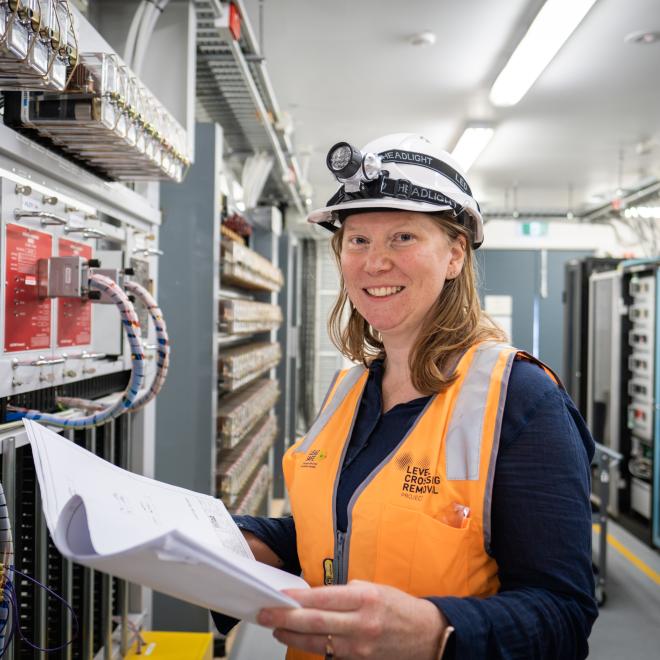
The role
Tasks include:
• installing, modifying, maintaining and repairing complex electronic and mechanical signalling equipment
• testing and monitoring to ensure the safety and reliability of signalling equipment
• ensuring all work is performed according to Workplace Health and Safety (WH&S) requirements and technical and operational specification and standards
• completing documentation as required.

Skills required to be a Rail Signalling Technician
- Ability to plan
- Risk management
- Asset management
Previous experience
Rail Signalling Technicians are qualified electricians or electrical fitters# who often come from a career in:
- construction/ defence/ resources sectors
- electrical supply industry
- engineering work
Minimum requirements
Minimum qualification for role: UEE41223 - Certificate IV in Electrical - Rail Signalling^.
In most jurisdictions entry into UEE41223 requires completion of UEE30820 Certificate III in Electrotechnology Electrician or a current ‘Unrestricted Electricians Licence’. Some jurisdictions allow entry into the UEE41223 using UEE33020 Certificate III in Electrical Fitting.
Check with your local TAFE or rail transport operator for details.
Alternative entry
Those entering the field with wider work experience or qualifications may undertake study at the higher-level certificate, diploma or advance diploma levels.
Many of these qualifications can be undertaken as an Australian apprenticeship, subject to change based on state and territory requirements.
Progression to more senior roles usually comes through experience. However, opportunities to advance could be more likely if you have relevant qualifications. The Potential Training Pathway below identifies some of these training options in the VET system.
Some universities also offer engineering or other relevant qualifications.
Potential training pathway

Accelerate your training
- High school students may be able to complete up to six Certification III subjects by choosing the right electives in their Certification II.
- TAFE students could save time and money on training by selecting up to four Certification IV units as part of their Certification III.
What a Signalling Technician's career progression can look like

The minimum qualification to practice as a Professional Engineer is usually an appropriate bachelor or masters of engineering. However, it may be possible to progress into some engineering positions with relevant industry experience and further study at the diploma and advanced diploma levels.
This can include:
(Requirements vary between systems and engineering disciplines, talk to your rail transport operator for specific information relating to their workplace.)
What do I do next?
Our findings include information from the Australian Industry Standards' Seamless Future Rail Skills report.
To find out more about how to become a Rail Signalling Technician:
- check out the Signalling Technician on the Work in Rail website
- talk to your careers adviser
- get in touch with the Electrical Trades Union
- contact your local TAFE
- if you already work in rail, talk to your employer
Rhys Wilkinson was an electrician's apprentice doing domestic and commercial work when he took a job as Signalling Technician with the Australian Rail Track Corporation (ARTC).
Read about his journey here.

